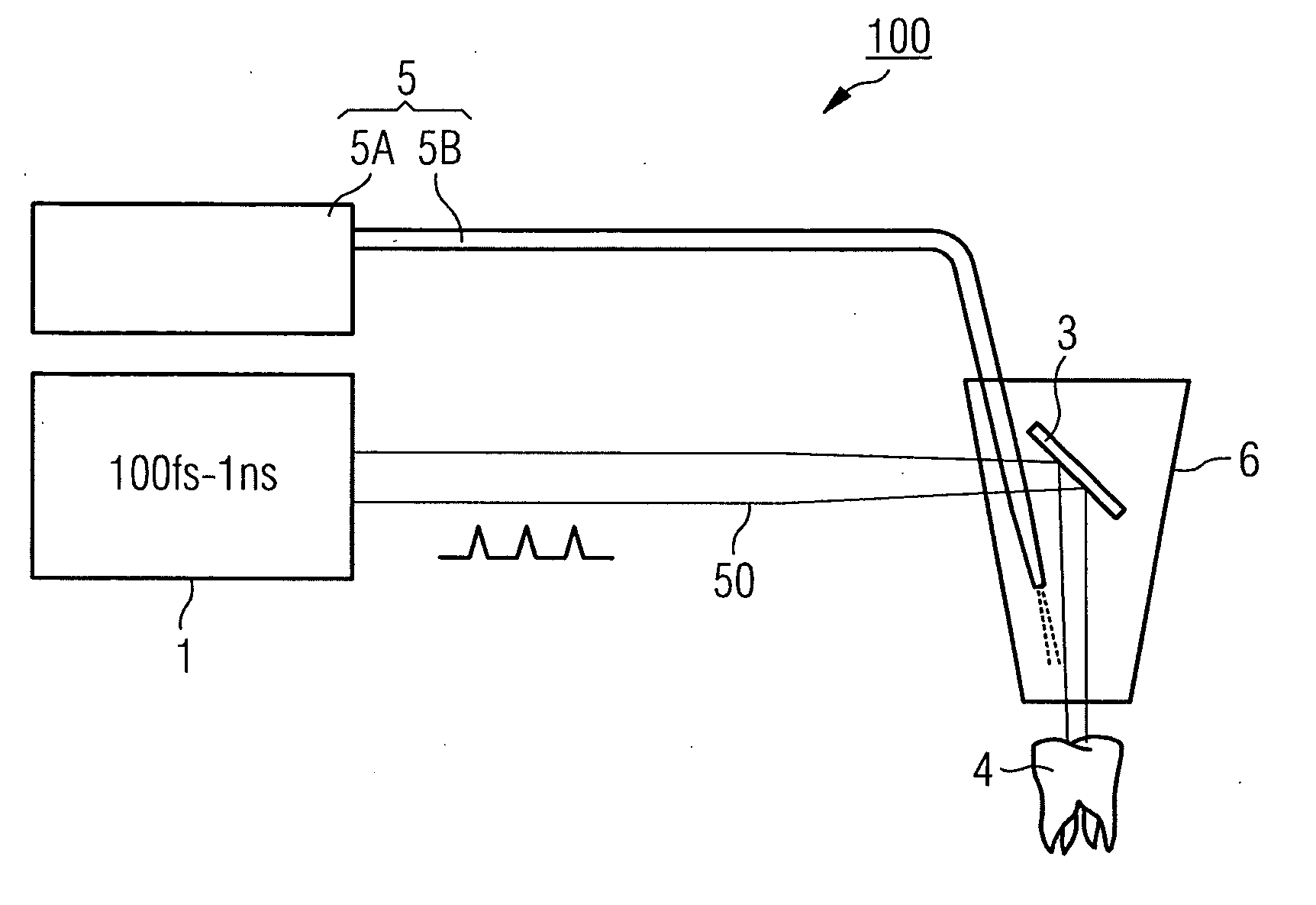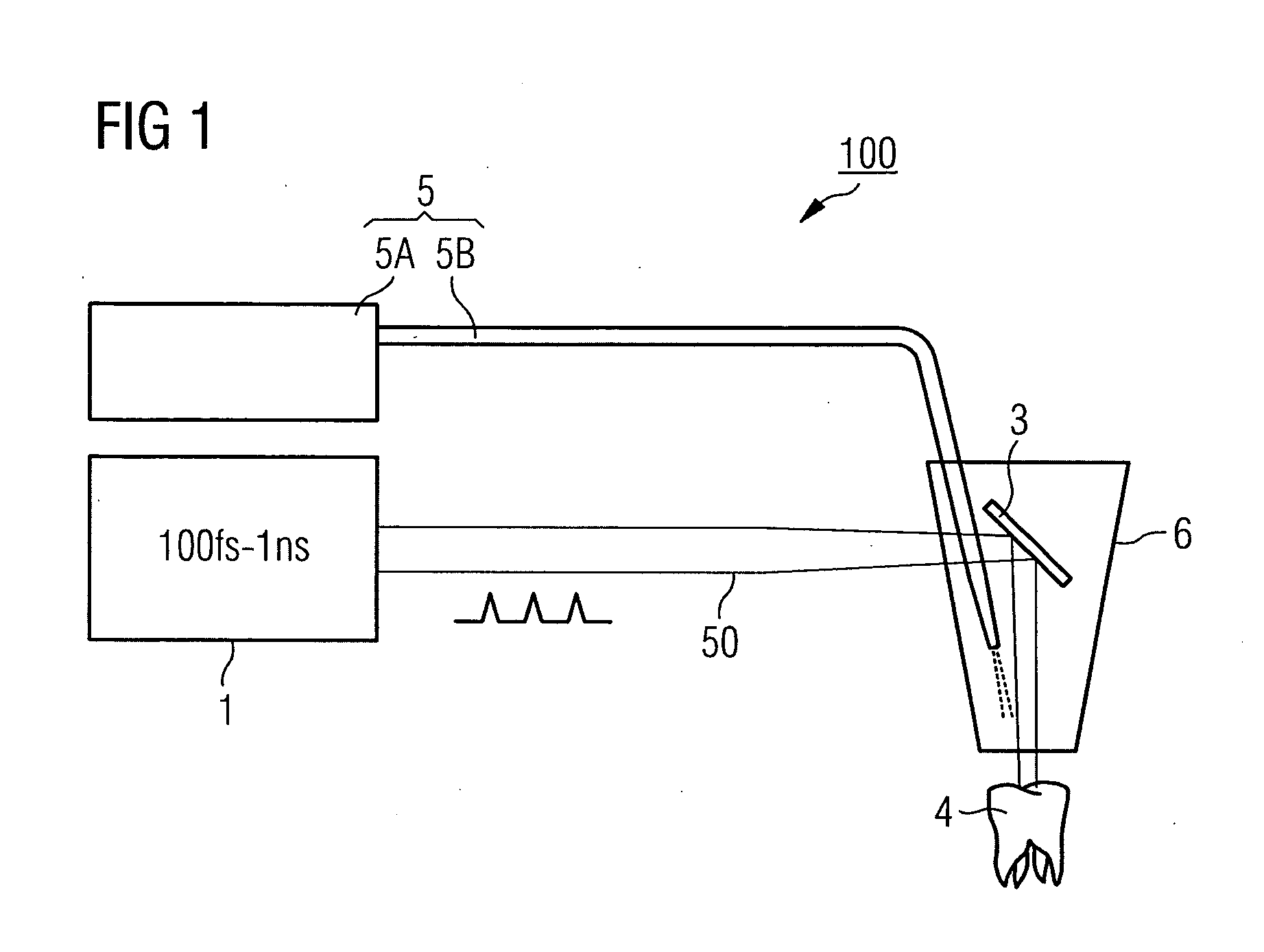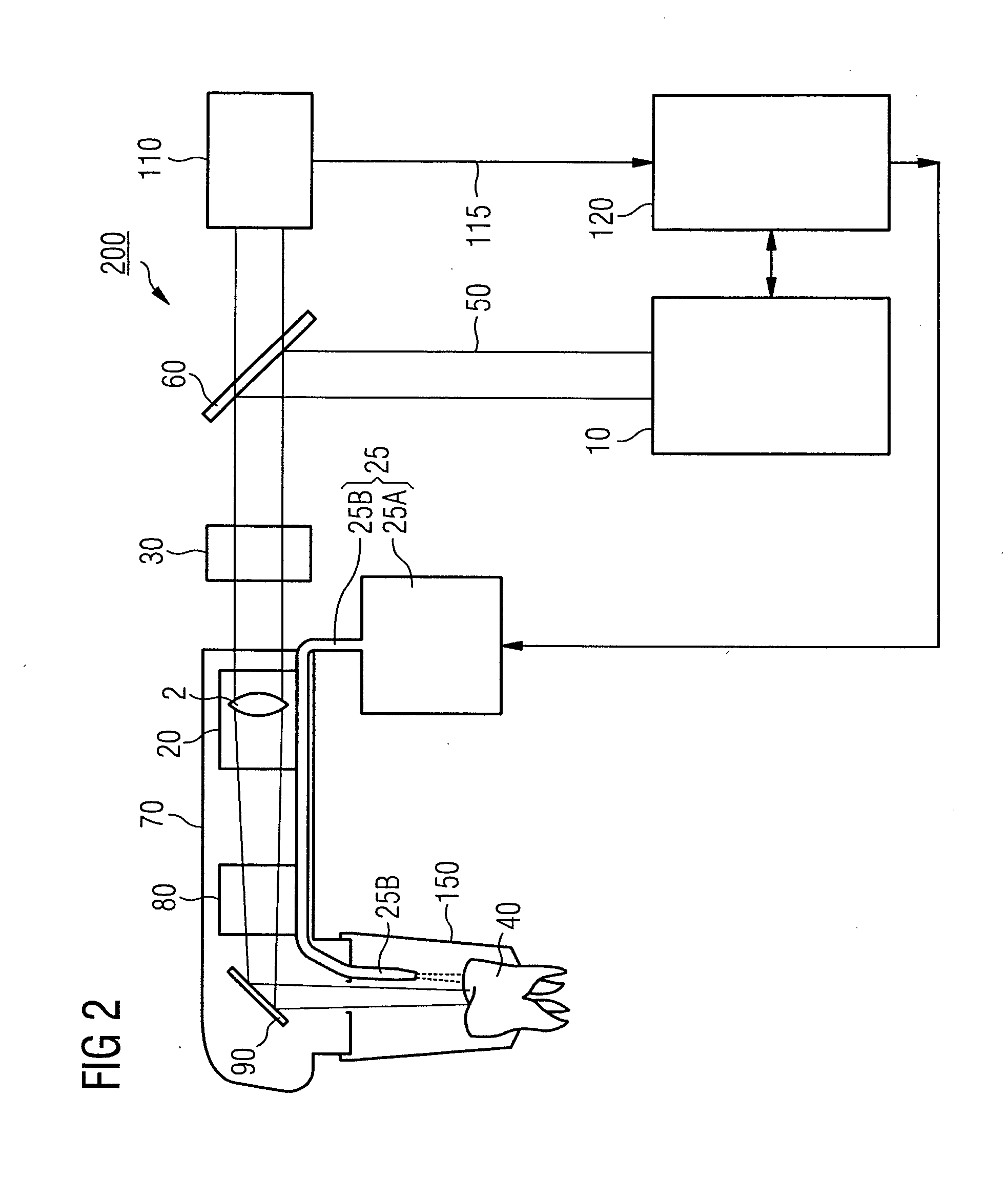Method and laser processing device for processing tissue
a tissue and laser processing technology, applied in the field of tissue laser processing, can solve the problems of insufficient removal efficiency, no “smart” device for simultaneous and objective detection, unavoidable pain, etc., and achieve the effects of avoiding or minimizing the damage of tissues, and reducing the risk of infection
- Summary
- Abstract
- Description
- Claims
- Application Information
AI Technical Summary
Benefits of technology
Problems solved by technology
Method used
Image
Examples
Embodiment Construction
[0065]FIG. 1 illustrates one embodiment of a laser processing device for processing biological tissue, but not to true scale. FIG. 1 shows a dental laser processing device for processing, abrading or ablating dentin, particularly carious dentin. However, the laser processing device may be any other kind of medical laser processing device for processing some other kind of biological tissue. For example, ophthalmology can be another potential field of application.
[0066]The laser processing device 100 comprises a laser radiation source 1 that may emit a pulsed laser beam 50 with a laser pulse ranging between 100 fs and 1 ns (Full Width Half Maximum). The laser beam may be focused on a patient's tooth 4. It may be necessary to first deflect the laser beam with an optical deflection unit 3 such as a mirror or deviation prism.
[0067]The laser radiation source 1 may generate the laser pulses so that the energy per pulse does not exceed 100 μJ. In this case, the focusing of the laser beam ca...
PUM
 Login to View More
Login to View More Abstract
Description
Claims
Application Information
 Login to View More
Login to View More - R&D
- Intellectual Property
- Life Sciences
- Materials
- Tech Scout
- Unparalleled Data Quality
- Higher Quality Content
- 60% Fewer Hallucinations
Browse by: Latest US Patents, China's latest patents, Technical Efficacy Thesaurus, Application Domain, Technology Topic, Popular Technical Reports.
© 2025 PatSnap. All rights reserved.Legal|Privacy policy|Modern Slavery Act Transparency Statement|Sitemap|About US| Contact US: help@patsnap.com



